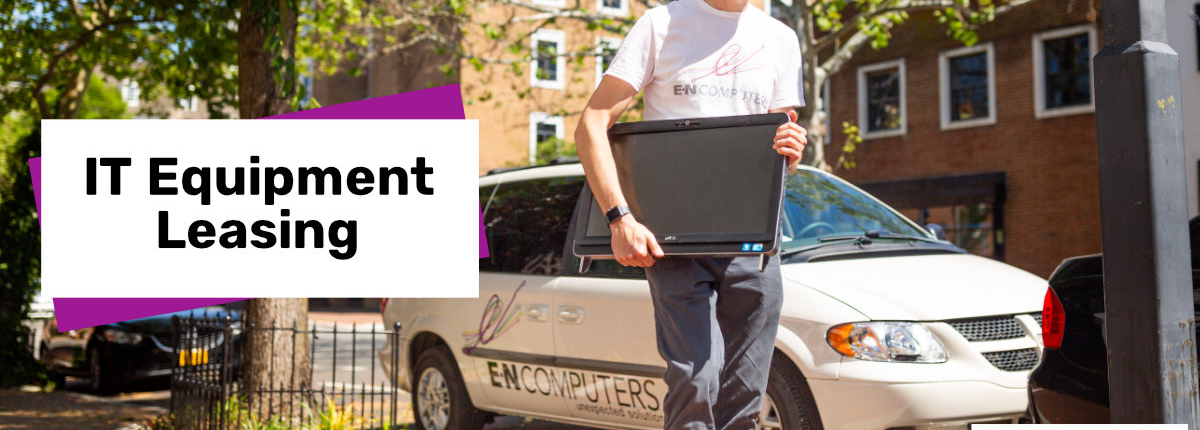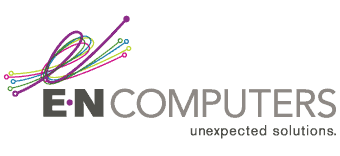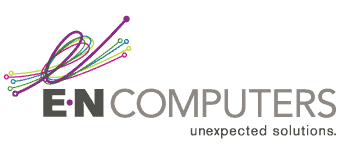

Content Contributor, E-N Computers
7+ years experience in healthcare IT and tech support.
You’ve decided it’s time for new IT equipment. Maybe you’re growing quickly and need to add capacity or your outdated infrastructure is causing headaches. Either way, investing in equipment is a major expense. Should you buy or lease?
Whether you buy or lease will depend on the goals you want to achieve. Buying equipment outright gives you greater flexibility in what you do with it and how long you keep it. However, it is a high upfront cost that can be undesirable or impossible depending on your business’s growth stage. Leasing spreads that cost out with options to own or upgrade at the end of the lease term; the trade-off is that you need to be familiar with the structure and terms of a lease.
To help with that, we’re going to cover two types of leases, their common funding sources, and some other considerations to be aware of. This information will help you decide which financial path is right for you as you upgrade your systems.
QUICK ANSWER:
What do I need to know about IT equipment leases?
Equipment leases are great for acquiring new equipment without a big upfront expense. Some work almost like a loan while others are more like renting the equipment. Financing is available through IT vendors as well as leasing companies. Even though you don’t own the equipment, you’ll be responsible for insuring it and paying any property taxes on it.
Two Types of Leases
A key difference between leases and loans is ownership. When you use a loan to purchase something, your company owns the equipment, but the loan company puts a lien on it. When you lease equipment, the lessor owns the equipment. In the past, that meant that they were responsible for costs of ownership like taxes, maintenance, and risk. Today, though, those costs are passed on to the lessee.
Two common types of leases are one-dollar buyout and fair market value. These names refer to what happens at the end of the lease. Here’s a brief description of each.
One-dollar buyout. Also known as a capital lease, a one-dollar buyout operates similarly to a loan. While you don’t own the equipment during the lease, this type of lease is great if your goal is to eventually own the equipment. During the lease, you make fixed monthly payments. At the end of the lease, you have two options: 1) finish buying the equipment for $1 or another low residual amount, or 2) return the equipment. Equipment purchased this way is put on your balance sheet and typically qualifies for a Section 179 tax deduction, making this lease type popular with buyers.
Fair Market Value. This type of lease is sometimes called an operating, or true, lease. In essence, you are paying for the temporary use of equipment and do not expect to gain ownership at the end of the lease. Because of this, the monthly payments are lower than in a one-dollar buyout. At the end of the lease term, you have three options: 1) return the equipment, 2) lease for another 6 to 12 months, or 3) pay the “fair market value” of the equipment to keep it. This lease type is ideal if you intend to regularly replace equipment.
Though an FMV lease is useful for equipment you want to upgrade regularly, there are also reasons to be cautious. First, if you change your mind and want to keep the equipment, you usually have to tell the lessor well in advance. Second, the lessor will try to get top dollar for the “fair market value”. You might be able to negotiate that value, but it’s extra work. In addition, your lease may require you to notify the lessor months in advance of which option you will exercise.
Lastly, you should know that in the past, assets acquired with an FMV lease were not kept on the books; the lease was treated as an operating expense. However, changes to FASB rules now require leased equipment to be recognized on the balance sheet if the lease term is longer than one year, regardless of lease type.
Two Funding Sources
Equipment leases have two major funding sources: vendors and leasing companies. We partner with vendors like Dell and Cisco, and leasing companies like GreatAmerica, that provide lease options to customers looking to buy IT equipment.
Vendors. Vendors provide financing to increase sales. Like car dealers that offer better deals at the end of a quarter or year, vendors sometimes offer better equipment leasing terms if they need to bump their sales numbers. Combine that with a one-dollar buyout lease and you can potentially come out with a great deal. Be aware, though, that these deals are not as common as they used to be.
It’s also important to consider whether there are bundled services or strings attached. For example, copier leases often include maintenance and consumables for a pre-determined level of usage. There could be additional fees for higher monthly usage. Or you might find a software vendor that will finance the hardware and training you need, but with terms that make it difficult to part ways if their software doesn’t meet your needs. If your project is predominantly software or training focused, a lease is probably not the best fit for you.
Leasing Companies. In contrast with vendors, lease companies are providing financing as their primary service. Working with a finance company can give you greater flexibility in lease arrangements and greater choice in which equipment to buy. Just like you would shop around for a bank loan, it’s a good idea to consider more than one lease company.
Hidden Costs
There are costs associated with a lease that aren’t always wrapped up in your fixed monthly payment. We estimate that you can expect these costs to be about 5% to 10% of the value of your lease. The bulk of this will be insurance and taxes.
Insurance. Lessors want to know that they are protected in case equipment is damaged. They will often contractually obligate you to have general liability insurance and list them as an additional insured on the policy. Adding them can slightly raise your premium.
Taxes. The company you are leasing from must report all equipment they lease out to the appropriate state and local jurisdictions. As the owner of the equipment, they are responsible for paying property tax. However, they will bill you for reimbursement. Some lessors offer payment plans for your tax bill.
Building an IT Strategy with Equipment Leasing
The decisions to buy or lease, and which kind of lease to choose, are closely tied to both your business goals and your IT needs. Having a clear business-IT strategy in place can help you make the decision. Keeping your business and IT strategy in sync can strengthen your business in several ways.
To see what that means, try our IT Maturity Self-Assessment. It’s free and takes just a few minutes. At the end, you’ll receive a list of action items to help you improve your IT stance, plus the opportunity to book a free strategy session with our team.
Learn More About Business-IT Strategy
READ: What is Business-IT Strategy Alignment?
READ: What is the Section 179 Business Tax Deduction?
Business-IT Strategy Alignment is an ongoing process of integrating technology with your business strategy and processes. It can help you reach your goals, improve your customer experience, and cut costs while realizing a higher return on your investments. E-N Computers has tools and processes in place to help all our clients make the most of IT in their business. Read this article to learn more.
Earlier, we mentioned that it’s popular to pair a one-dollar buyout lease with the Section 179 tax deduction. That’s because it’s a powerful way to reduce your equipment costs. This deduction allows you to first-year expense business equipment that you purchase, finance, or lease rather than depreciate it over five years. Get more details in this article.
Take the IT Maturity Assessment

Is your business ready to weather changes, including employee turnover? Find out by taking our IT maturity assessment.
You’ll get personalized action items that you can use to make improvements right away. Plus, you’ll have the opportunity to book a FREE IT strategy session to get even more insights into your IT needs.

Industries
Locations
Waynesboro, VA
Corporate HQ
215 Fifth St.
Waynesboro, VA 22980
Sales: 540-217-6261
Service: 540-885-3129
Accounting: 540-217-6260
Fax: 703-935-2665
Washington D.C.
1126 11th ST. NW
Suite 603
Washington, DC 20001-4366
Sales: 202-888-2770
Service: 866-692-9082
VA DCJS # 11-6604
Locations
Harrisonburg, VA
45 Newman Ave.
Harrisonburg, VA 22801
Sales: 540-569-3465
Service: 866-692-9082
Richmond, VA
3026A W. Cary St.
Richmond, VA 23221
Sales: 804-729-8835
Service: 866-692-9082
